Author: Will Lovell
Tripel is a strong golden Belgian ale made popular by Hendrik Verlinden in 1932 and was eventually adopted by the monks at Westmalle. Like many other Belgian ales, Tripel relies heavily on the use of sugar as a means of increasing alcohol content while contributing little to flavor, aroma, or body.
Standard table sugar, aka sucrose, can be used as-is for this purpose, but traditional Belgian brewers tend to prefer invert sugar, which is a syrup produce through a process of hydrolysis that breaks sucrose down into its constituent monosaccharides – glucose and fructose. While equally as fermentable, invert sugar ostensibly puts less pressure on the yeast during fermentation, as it doesn’t have to first break the disaccharide down, plus it’s also more soluble than crystalline sugar.
It’s no secret I’m a big fan of Belgian styles, and Tripel is certainly no exception! In my earlier years of brewing, I was convinced one needed to use Belgian Candi Syrup, an invert sugar, to stay true to style, though I’ve more recently been prone to using table sugar due to how readily available it is. Curious of how the different types of sugar compare when used in a Tripel, I designed an xBmt to test it out for myself!
| PURPOSE |
To evaluate the differences between a Belgian Tripel made with sucrose and one made with invert sugar.
| METHODS |
For this xBmt, I went with a simple Belgian Tripel recipe that I’ve brewed many times before.
Sanctuary Slumber Party
Recipe Details
| Batch Size | Boil Time | IBU | SRM | Est. OG | Est. FG | ABV |
|---|---|---|---|---|---|---|
| 5.5 gal | 60 min | 35.6 | 4.7 SRM | 1.067 | 1.003 | 8.4 % |
| Actuals | 1.067 | 1.003 | 8.4 % | |||
Fermentables
| Name | Amount | % |
|---|---|---|
| Llano Pilsner | 11 lbs | 73.33 |
| Sucrose OR Invert Sugar | 3 lbs | 20 |
| Denton County Wheat Malt | 12 oz | 5 |
| Aromatic Malt | 4 oz | 1.67 |
Hops
| Name | Amount | Time | Use | Form | Alpha % |
|---|---|---|---|---|---|
| Willamette | 56 g | 60 min | Boil | Pellet | 4.9 |
| Saaz | 28 g | 5 min | Boil | Pellet | 2.4 |
Yeast
| Name | Lab | Attenuation | Temperature |
|---|---|---|---|
| Triple Double (B48) | Imperial Yeast | 78% | 64.9°F - 77°F |
Notes
| Water Profile: Ca 94 | Mg 0 | Na 0 | SO4 114 | Cl 82 |
Download
| Download this recipe's BeerXML file |
The night before brewing, I made a batch of invert syrup by dissolving 3 lbs/1.36 kg of table sugar and 1.3 oz/36 g citric acid into 2.7 cups/473 mL of water; the amount of sugar used to make the invert syrup is identical to the amount of table sugar used in the other batch. I gently stirred this solution until it reached a boil, at which point I stopped stirring and made sure to brush down any crystals that formed on the sides of the pot.
It’s important not to stir once a boil is reached! When the solution gets to around 236°F/113°C, it’ll be clear, at which point it can be removed from the heat and allowed to cool.
The following day, I collected identical volumes of water in separate Delta Brewing AIO units, adjusted each to the same mineral profile, then set the controllers to heat them up before milling the grain.
When the water for each batch was adequately heated, I incorporated the grains then set the controllers to maintain them at the same target mash temperature.
While the mashes were resting, I prepared the kettle hop additions.
Once each 60 minute mash was complete, I removed the grains then proceeded to boil the worts for 60 minutes, adding the sugars to each batch with 10 minutes left to go.
When the worts were done boiling, I quickly chilled them before taking refractometer readings showing they were at nearly the same OG.
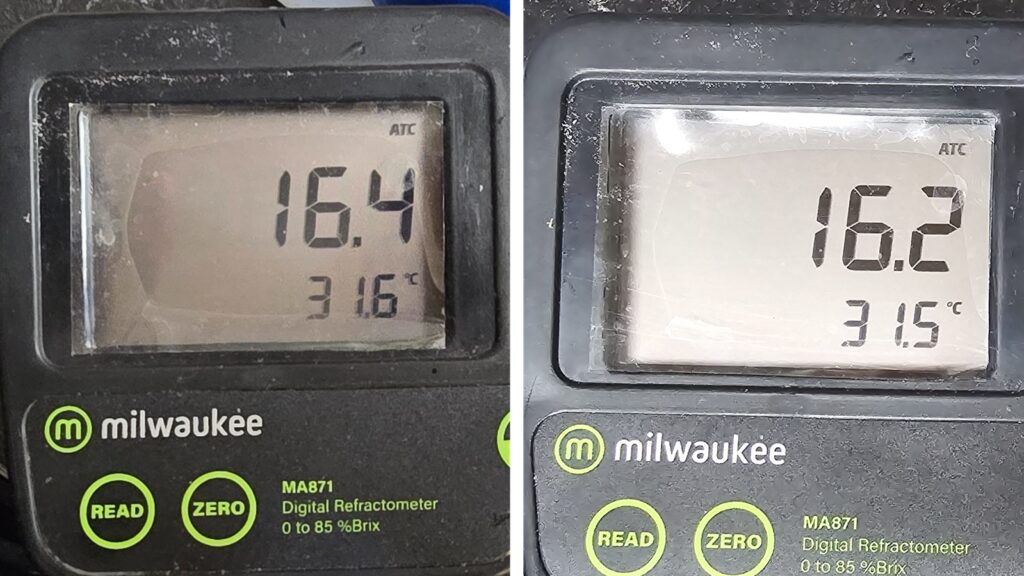
I transferred identical volumes of wort from each batch to Delta Brewing FermTanks that were attached to my glycol system and left to finish chilling to my desired fermentation temperature. Within 20 minutes, both worts were stabilized at 64°F/18°C, so I pitched a pouch of Imperial Yeast B48 Triple Double into each.
After 5 days of fermentation, I gradually raised the temperature to 72°F/22°C and left it there for another week before taking hydrometer measurements showing both beers had similar overall attenuation.
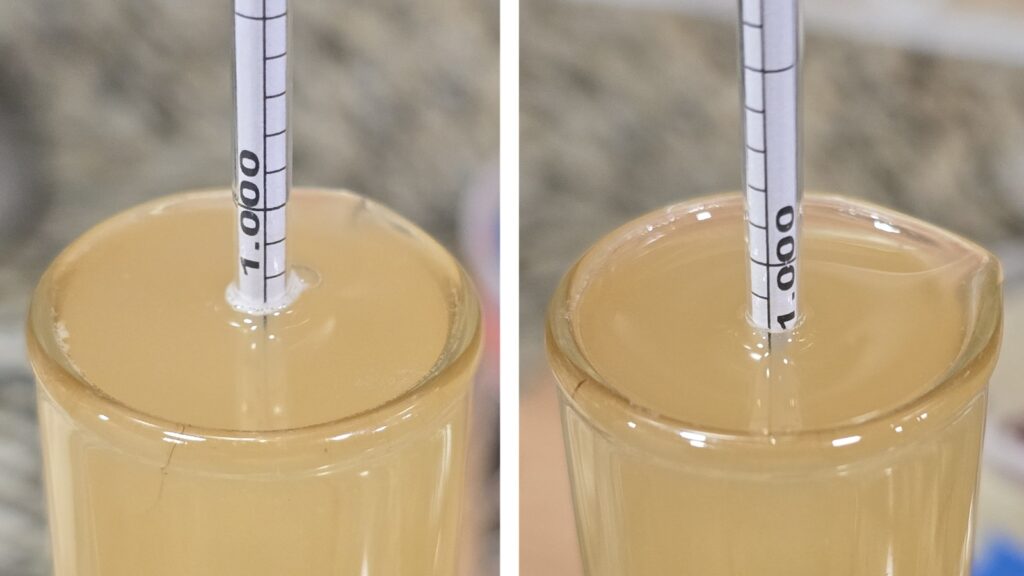
At this point, I cold crashed the beers overnight then pressure transferred them to CO2 purged kegs that were placed on gas in my keezer and left to condition for 4 weeks before they were ready for evaluation.
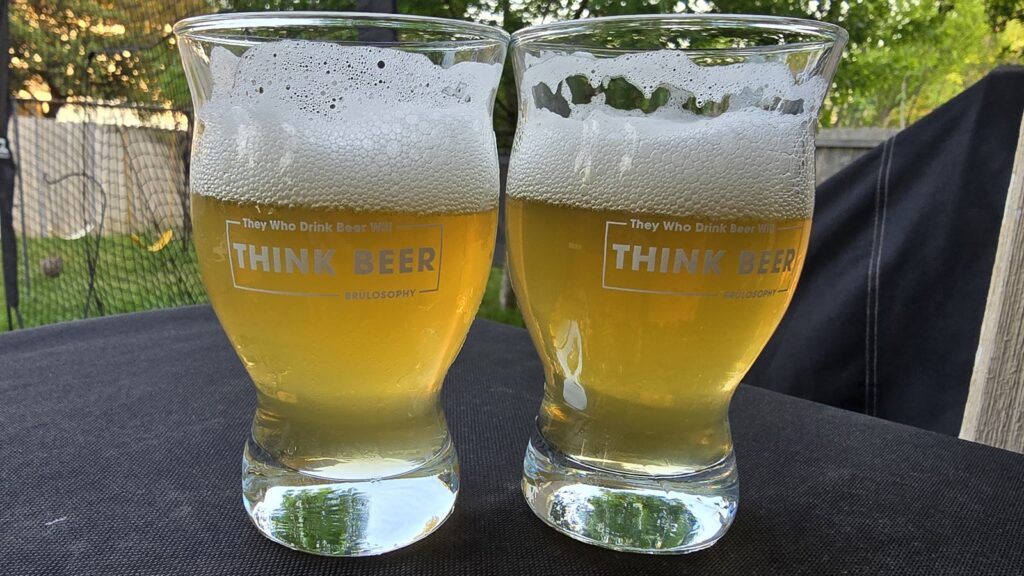
| RESULTS |
A total of 22 people of varying levels of experience participated in this xBmt. Each participant was served 2 samples of the beer made with sucrose and 1 sample of the beer made with invert sugar in different colored opaque cups then asked to identify the unique sample. In order to reach statistical significance, 12 tasters (p<0.05) would have had to accurately identify the unique sample, which is precisely the number that did (p=0.033), indicating participants in this xBmt were able to reliably distinguish a Belgian Tripel made with 20% sucrose from one that was made with that same amount of invert sugar.
The 12 participants who made the accurate selection on the triangle test were instructed to complete a brief preference survey comparing only the beers that were different. A total of 3 tasters reported preferring the beer made with sucrose, 5 said they liked the beer made with invert sugar more, and 4 had no preference despite perceiving a difference.
My Impressions: Out of the 5 semi-blind triangle tests I attempted, I correctly identified the odd-beer-out every time. I felt the one made with sucrose had a drier finish while the batch made with invert sugar was a touch sweeter on the palate. While I enjoyed drinking both beers immensely, I had a slight preference for the one made with sucrose.
| DISCUSSION |
Belgian Tripel is a style that’s known for being quite dry despite its higher strength, which is often accomplished through the use of simple sugars thar are almost entirely fermentable. While some brewers opt for simpler options like straight granulated sucrose, others prefer to go the more traditional route by using invert sugar, which is equally as fermentable while purportedly contributing unique flavor characteristics. Indeed, tasters in this xBmt were able to reliably distinguish a Belgian Tripel made with table sugar from one that was made with an equal amount of invert sugar.
One plausible explanation for these results is that some about the way yeast metabolizes sucrose, a disaccharide, results in different perceptible byproducts compared to when it ferments the separate monosaccharides, glucose and fructose, present in invert sugar. It’s commonly claimed that invert sugar is perceptibly sweeter than sucrose, which may also play a role, as some tasters reported perceiving the Tripel made with table sugar as being drier and less sweetness.
Considering the similar levels of fermentability between sucrose and invert sugar, I was admittedly surprised with these results, particularly in my own ability to consistently tell the beers apart. While they were both delicious, I had a slight preference for the dryness of the one made with table sugar, which happened to win a silver medal at a recent local competition.
If you have any thoughts about this xBmt, please do not hesitate to share in the comments section below!
Support Brülosophy In Style!
All designs are available in various colors and sizes on Amazon!
Follow Brülosophy on:
FACEBOOK | TWITTER | INSTAGRAM
If you enjoy this stuff and feel compelled to support Brulosophy.com, please check out the Support page for details on how you can very easily do so. Thanks!




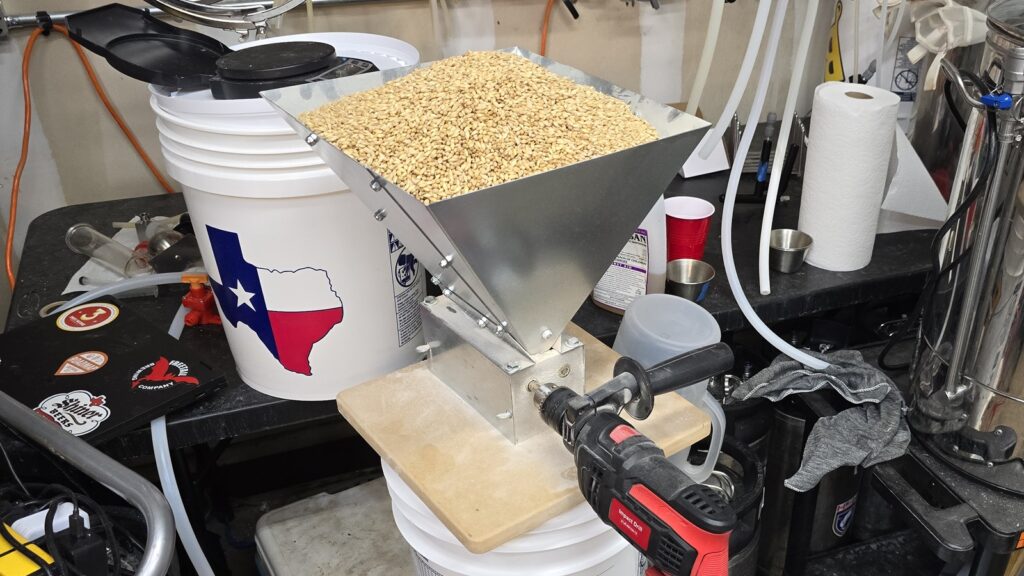
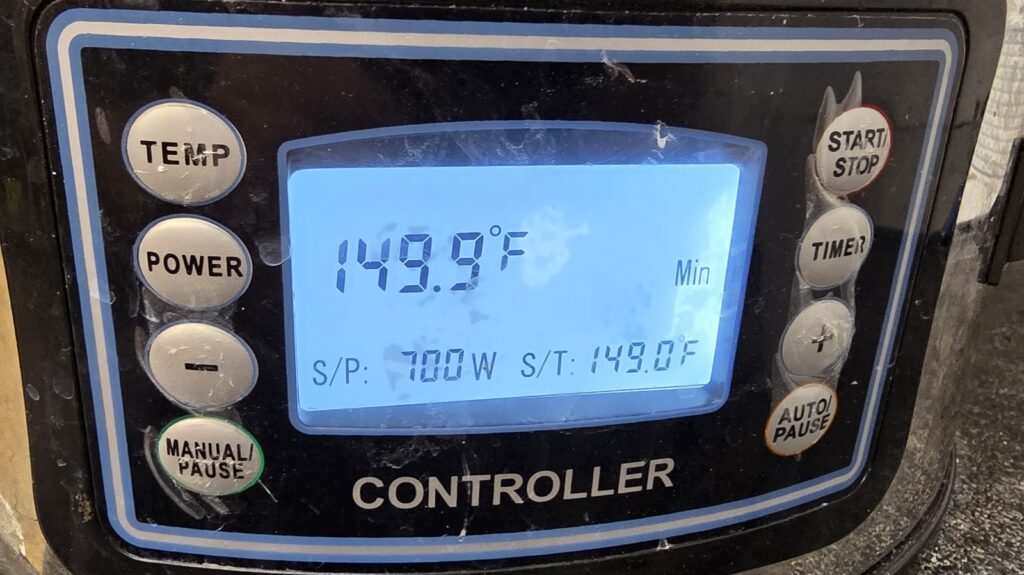
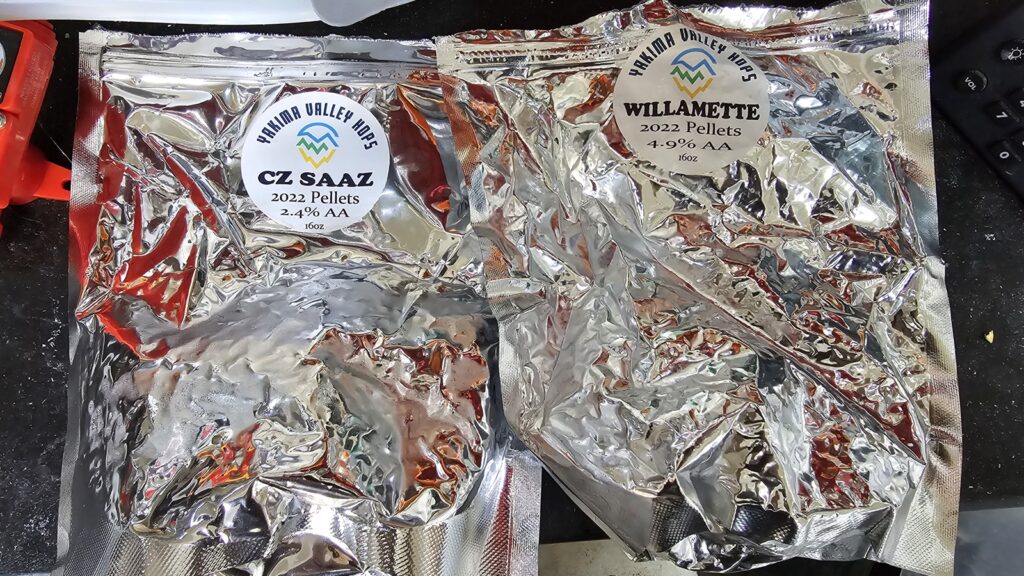

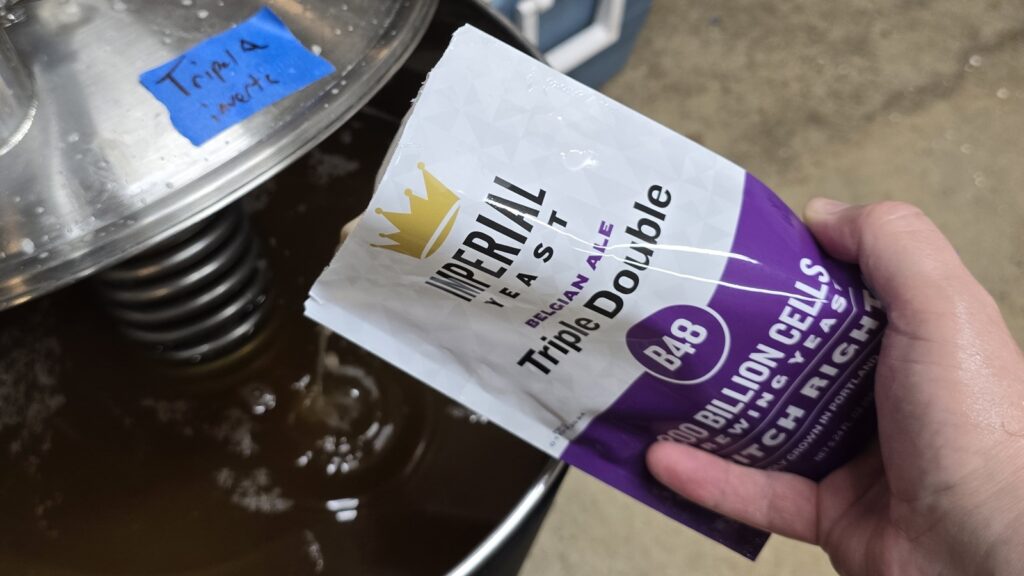





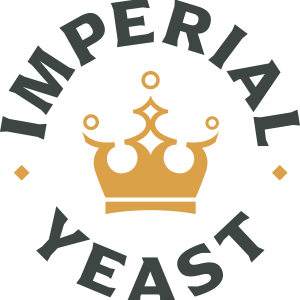

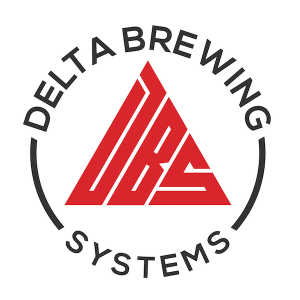


7 thoughts on “exBEERiment | Sugar Additions: Sucrose vs. Invert Sugar In A Belgian Tripel”
Makes me wonder if the fact that sugar was (and still is in non-sugar cane lands) produced by boiling sugar beets for a long time (some of which might’ve already starting to rot with lactic bacteria, bringing the ph down?) which gave rise to an inverted syrup still being used today in the production of Abbey beer? 🤔
Interesting experiment this one for sure. Will give it a shot myself in the near future and see if I can spot the difference (and preference) 👌
I really enjoyed both beers, but with the ease of just adding table sugar, it would be hard for me to justify using invert in this application again. But they did taste different to me and tasters, so obviously not a one size fits all thing for preference.
Hi. To my knowledge neither invert sugar nor sucrose is used in Belgian abbey and trappist beers. Instead candy syrup is used. The main difference between invert sugar and candy syrup is that invert sugar is made of sugar and citric acid while candy syrup is made of sugar and lye.
The pH of the wort and the finished beer were the same in both batches?
Thumbs up for the testing effort! However… shouldn’t the candy sugar be made with lye, rather than acid?
I had good results with hightening the ph, rather than lowering it.
https://suigenerisbrewing.blogspot.com/2013/10/belgian-candi-sugar-ii.html
Disaccharides can be hydrolysed by both acid or alkali catalysis. However, lye (sodium hydroxide, an alkali) would massively increase your sodium level in your water chemistry – not good. Did you add citric acid to both beers? 36g is a fair amount and will lower the pH and change the flavour – I wonder if this has caused more of an impact?
A tripel is pretty much always on tap at my house because both my wife and I love it. I’ve done a few side by sides over the years and found some things we can and cannot tell apart.
We were able to tell the difference between using 1 LB Candi Syrup with 1 LB Sucrose and just using 2 LB sucrose. My wife prefers the Candi Syrup version so it stays.
We were unable to tell the difference between one brewed with Belgian Pilsner and bries pilsner. Would love to see Brulosophy do an experiment on this and see if others can tell the difference.